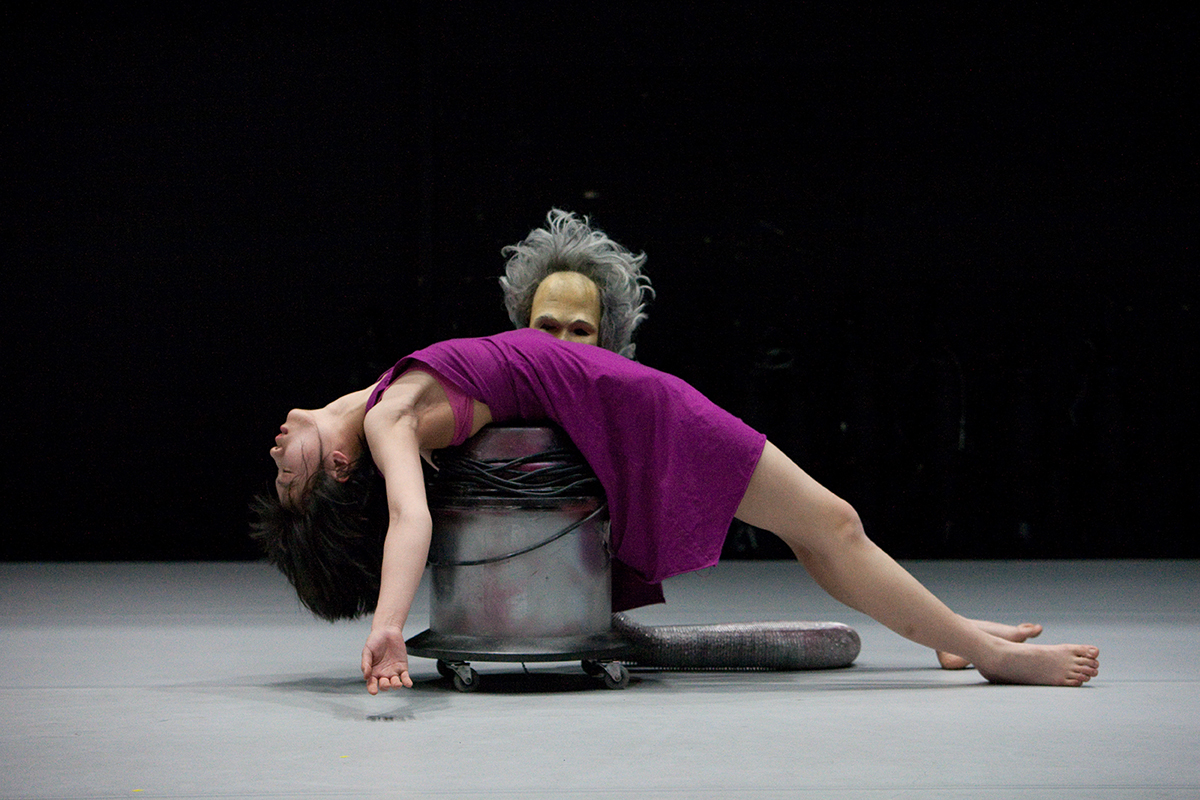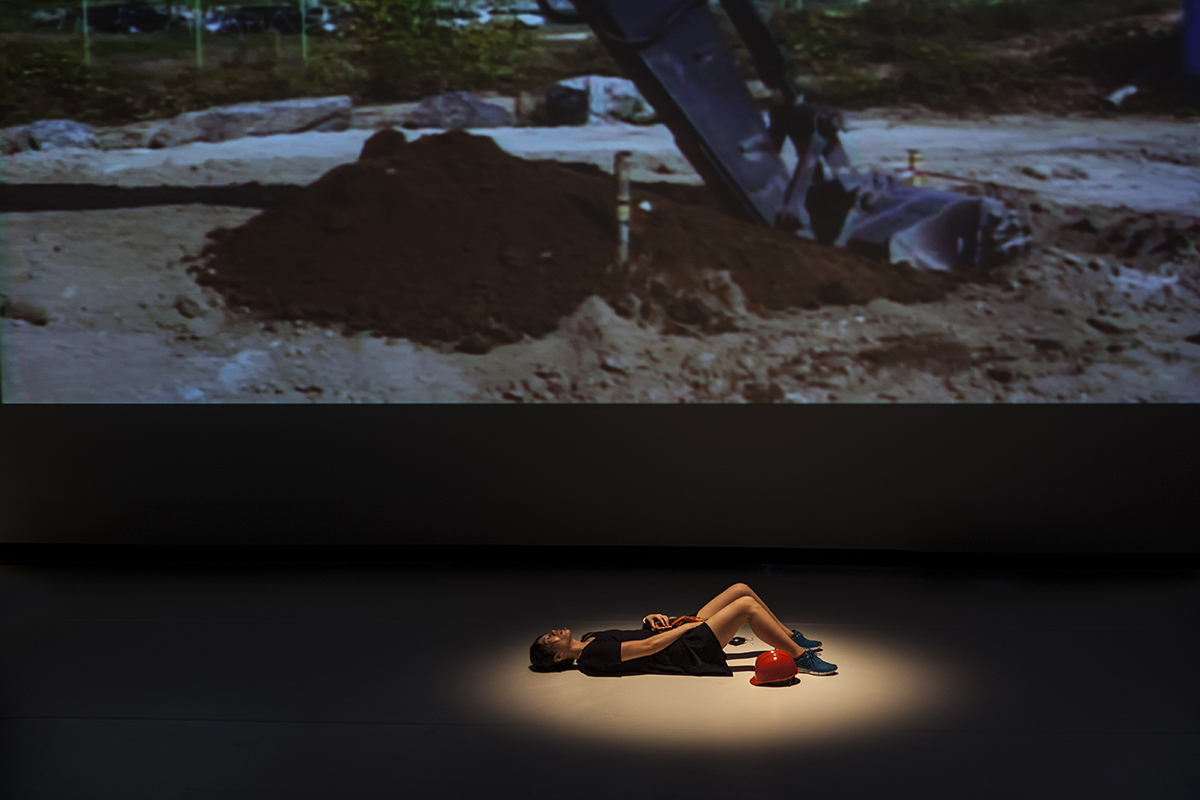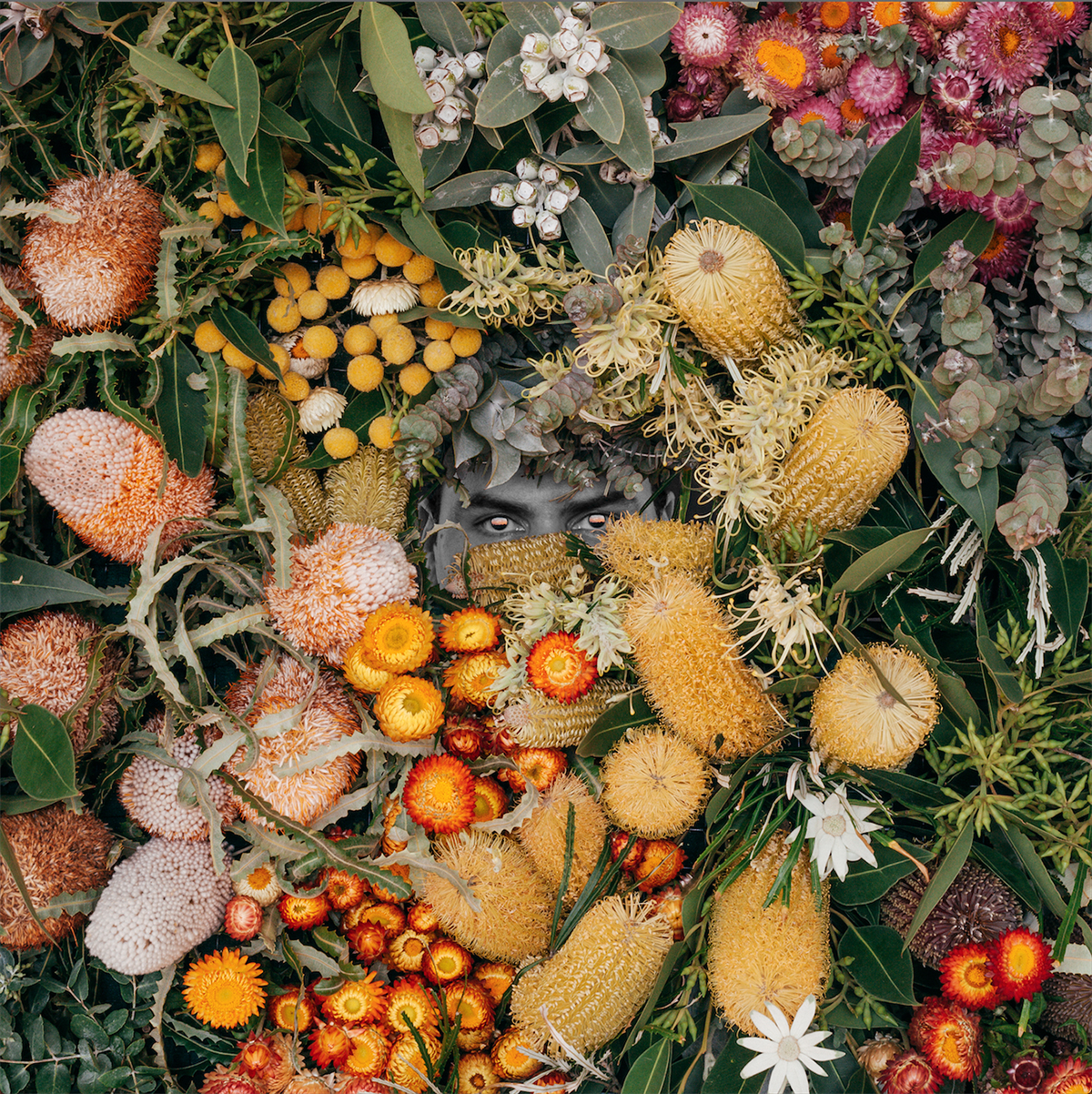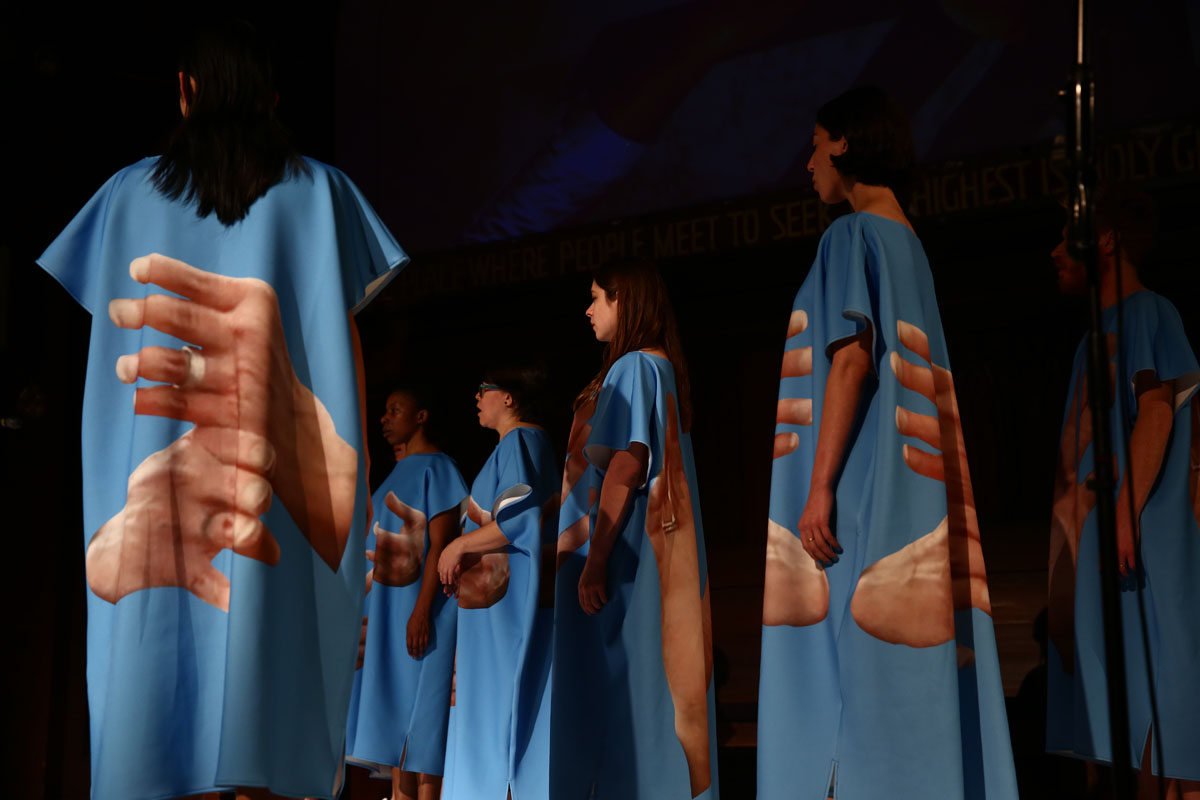
Liveworks 2017: Beautiful Disturbance; interview, Jeff Khan
Jeff Khan’s in high spirits about the imminent opening of the 2017 Liveworks Festival of Experimental Art and his programming tells me why. The works he conjures are fantasias, at once beautiful and disturbing, and political provocations embodied in intimate close-ups and works of scale. Liveworks artists are experimenting with contemporary performance, performative installation, lecture-performance, one-on-one interaction, environmental dance, live art and a visual art exhibition that entails performance. Cultural representation in the program includes Japan, South Korea, the Philippines and Indigenous and other Australia. An influential Singaporean curator and dramaturg, Tang Fu Kuen, will deliver one of two keynote addresses (a new initiative for the festival), the other by Indigenous artist r e a, a leading figure in Australian new media art. I met with Jeff Khan and asked him to guide me through his 2017 Liveworks Festival program.
What’s your big picture for Liveworks in 2017?
It’s our third festival and we’ve established Liveworks as an Asia-Pacific festival and it feels like that aspect of the festival is really hitting its stride. It features the largest contingent from Asia that we’ve had and a first tentative step into the Pacific with Mark Harvey who’s from New Zealand — not a broad reach into the Pacific, but a start. All of the relationships we’ve been developing with artists in the region have come to fruition though research and Performance Space being present at festivals, platforms and events in Asia over recent years.

LabAnino, Liveworks 2017, photo Toni Muñoz
Let’s talk about those Asian artists. From the Philippines you have Eisa Jocson, who appeared in your 2015 program with Macho Dancer, which provoked strong responses and has just been well-received in Adelaide’s OzAsia Festival.
There are three Philippines-related projects this year. Eisa is returning with a brand new lecture-performance work, Corponomy, in which she’ll reflect on her works and demonstrate systems of physical exercise that transform the body. We also have LabAnino, a collective of Filipino and Australian artists who’ve been practicing for over a decade: Valerie Berry, Paschal Berry, Kenneth Moraleda, Deborah Pollard and the Anino Shadowplay Collective from Manila. Performance Space has presented both of their previous collaborations and hosted them in our Liveworks Lab last year. We’re spotlighting what is a really enduring and very exciting collaboration
Who is the third Filipino artist?
Justin Shoulder, whose new work is Carrion [a post-human spectre that has the ability to shapeshift into multiple forms and speak multiple languages] is an Australian artist with Filipino heritage. Much of his creative development over the last few years has involved going back and forth, first from the Philippines to Australia and recently to Hong Kong and China.

Geumhyung Jeong, Oil Pressure Vibrator, Liveworks 2017, photo Gajin Kim
And from South Korea?
Geumhyung Jeong who was also involved in the Liveworks Lab last year is a solo artist whose work crosses the borders between dance, puppetry, performance art and sculpture. It’s idiosyncratic work and very weird in a really interesting way. She’s an extraordinary performer and all the work is driven by her physicality. In the suite of two works we’re presenting, [she focuses on] the relationship between her body and a series of inanimate objects. Seven Ways, an iconic work and her first full-length production, is a duet between her body and seven very carefully chosen domestic appliances or objects including a vacuum cleaner, a mannequin and a suitcase. These encounters are very charged, highly eroticised and overtly sexual. It’s a unique depiction of a side of human sexuality that we don’t really explore much on stage. Her most recent performance work, Oil Pressure Vibrator, takes this idea several steps further in a performance-lecture that describes her relationship with and her lust for a huge industrial earth excavation machine. She looks back at Seven Ways, the relationships she’s had with objects, explains the rationale and then moves on to this idea of falling in love with the excavation machine and applying for a license to drive one in Korea. There’s footage of her lining up with construction workers of Seoul to test and fail, test and fail, until finally she gets her license to drive the machine so that, essentially, she can “commune” with it.
I wonder what this says about her view of South Korean culture.
I guess because South Korea is so technologically driven by the merging of the human and technology.
And perhaps too an extension of the kind of animism afforded nature in that culture.
She has such a singular vision about this. In Seven Ways she operates all of the inanimate objects almost as puppets in their interaction with her. So she’s performing as herself and the objects.
Who do you have from Japan in your program?
Osaka-based Tetsuya Umeda will present his installation Ringo. He’s a sound and installation artist coming from a long tradition of experimental sound practice in Japan that’s been pioneered by people like the legendary sound artists and instrument builders Akio Suzuki and Aki Onda. Tetsuya is an artist I’ve wanted to work with for a long time. He also works with mundane domestic objects — lampshades, tin cans, Bunsen burners, plants — and arranges them into quite elaborate installations which he activates through performance, where he either sets up chains of cause-and-effect or manipulates objects live to produce quite fantastical light- and soundscapes. There’s a beautiful respect for objects both in Geumhyung and Tetsuya’s practices that re-orient our own relationship to things around us and the world.
I see that Ringo is a ticketed event, but you describe Tetsuya Umeda as an installation artist.
Ringo is a ticketed event in the form of an installation performance. Tetsuya sets up a series of scenarios in a very low key way, wandering through and activating the installations, transforming them to produce quite magical sound and light effects.

Christian Thompson, Purified by Fire from the Lake Dolly series, 2017, image courtesy the artist
Let’s talk about Indigenous Australian artists in the program. Christian Thompson is a highly performative visual artist who’s often been the subject of his own work in quite unusual ways in exquisitely staged and costumed photographic and video works, and now in live performance.
Christian has maintained a live performance practice. I remember working at Gertrude Street in Melbourne and organising a few live gigs where Christian performed punk music/performance art. He also has a Master of Theatre degree from the Amsterdam School of Arts, Das Arts, which he received in 2010. He’s very comfortable in the world of performance but those works are rarely seen or given equivalent recognition. This work, Tree of Knowledge, was originally seen at the Art Gallery of NSW for the Anne Landa Award exhibition in 2012, but performed in the foyer with a transient audience. We’ve supported him to redevelop it into a full-scale performance work and also introduced Christian to Claire Britton who, of course, is a much loved and well-known designer who stands between the visual and performing arts worlds with her practice. She’s coming in as an outside eye to help adapt the performance for a theatre context.
Another Indigenous artist, r e a, a leader on the Indigenous new media front, is to give a keynote address.
This is the first time we’ve had a keynote lecture component to Liveworks. R e a is a pioneering new media artist in Australia and she’s also about to finish her PhD. She’s been doing fascinating research into the relationship between technology and the construction of the Indigenous body. This has obviously informed her own work but is also really relevant to the work of artists like Christian and others of our leading Indigenous artists. Also, r e a’s newer work is [dealing with] the intersection of indigeneity, gender and sexuality — exploring fluid gender identities in indigenous cultures and the transition between male and female, which reflects much of the work we present at Performance Space and the increasing national and international interest in gender and sexuality in contemporary culture.
The other keynote will be given by the Singaporean Tang Fu Koen, a well-known curator and dramaturg in Asia.
He was involved in the early Time_Place_Space creative laboratory initiatives, a really important moment for Performance Space, before my time here. As well as being a dramaturg for artists like Eisa Jocson and Thailand’s Pichet Klunchun, Fu Koen has recently been appointed Artistic Director of the Taipei Arts Festival in Taiwan. It’s always been an interesting, outward looking festival and Fu Koen is certainly one of the foremost curatorial experts in SE-Asian performance practice and how traditional cultures are finding contemporary expression through experimental work. His perspective on practice in the region will be a real boon for the Liveworks audience.
Let’s talk about other Australian and New Zealander works in your program. You’ve just returned from the Proximity Festival in Perth where you’d been one of the provocateurs assisting artists in developing their performances.
Jen Jameson’s Let’s Make Love was one of the Proximity performances. It’s a really beautiful 20-minute encounter between Jen and one audience member at a time, in a real time attempt to generate oxytocin, the hormone that produces the feeling of love, which, one might argue, we need more than ever in the world right now. The capacity to have very intimate encounters alongside large-scale works like Agatha Gothe-Snape’s Rhetorical Chorus or Justin Shoulder’s Carrion is very exciting

Mark Harvey, Three Stages to Turqoisation, Blue Oyster Gallery, 2016, photo Chloe Geoghegan
Does New Zealander Mark Harvey’s work fit as an intimate work?
Yes. Mark is almost like an artist in residence because his series of free performances will happen in and around the Carriageworks precinct over the two weeks of the festival. He’ll set up quite physically absurd situations in which he’ll invite conversation with passers-by about politics. For example, one of his works is called Face-down Projections. He will lie face-down at the threshold of the entrance to Carriageworks and invite you to step on his back so he can telepathically intuit your carbon footprint and then broadcast it to everyone else in the building. In Backward Conversations, he walks backwards for two hours through a space and invites people to walk backwards with him and have a conversation about what they find frustrating or immoveable about the politics of the day. It’s a very disarming way to try to crack open conversations about politics.
Nat Randall’s The Second Woman is both intimate, with its one-on-one encounters, and epic, because they are watched by a large audience over 24 hours.
There’ll be 100 ‘co-performers’ over the 24 hours of the performance. Like Mish Grigor’s The Talk in last year’s program, this is a work by a local artist that belongs at Performance Space and Liveworks. It’s a real thrill for us to present the Sydney premiere of The Second Woman.
Lz Dunn’s AEON impressed our Hobart reviewer when it premiered in the Salamanca Moves dance festival last year and has since been shown in Melbourne.
It’ll be presented in a secret location in the Newtown vicinity not far from Carriageworks. It’s a beautiful walking and sonic experience of nature.
A flocking experience, based on bird behaviour I gather.
Yes, the participants flock. AEON was commissioned by Mobile States consortium which is great for Performance Space to be part of and to be able to present the Sydney premiere before it then goes to PICA.

Rhetorical Chorus, Agatha Gothe-Snape, 2017, Liveworks 2017, photo courtesy the artist
Tell me about Rhetorical Chorus.
We commissioned Rhetorical Chorus alongside The Keir Foundation for the Performa Biennial in New York in 2015. It’s a really wonderful large-scale performance work by Agatha Gothe-Snape based on the hand gestures of Lawrence Weiner, the legendary conceptual artist from the 1960s. Weiner’s text-based work has been a major influence on Agatha’s practice. She chanced upon him in 2011 while in transit at LA airport where they had an encounter in which their hands touched. It was a very arresting moment for her. She was amazed at the softness and sensuality of his hands as opposed to the very hard-edged, masculine rhetoric of his work. She’s compiled a dictionary of Weiner’s hand gestures, which are interpreted by Agatha’s long-time collaborator, performance artist Brian Fuata in choreography by Brooke Stamp and Lizzie Thomson, alongside a choir of experimental vocalists led by local composer Megan Clune and by Joan La Barbara, the internationally renowned vocalist and composer from New York who’s visiting Australia.
And lastly, the intriguingly titled The Future Leaks Out.
Our Program Manager Tulleah Pearce has curated this exhibition, which looks at the future as this contested site and the contrasting utopian and dystopian narratives that we’re currently facing, largely around the relationship between humans and the environment — all of these science-fictive narratives that are starting to become real in our lives. The centrepiece of the exhibition is a huge 10-metre waterfall of mist in the Carriageworks public space by Emily Parsons-Lord [see a video of the artist speaking about the air we breathe]. The waterfall will release distressed plant pheromones into the air throughout the festival.
Literally?
Literally. The pheromone can be chemically replicated.
It should be beautifully disturbing.
Exactly — much like our obsession with the future with apocalyptic fantasies that are both beautiful and disturbing at the same time. This undercurrent runs through the exhibition, which includes works by Angela Goh and Tully Arnot that will be activated at times with performances by the artists.
Thanks, Jeff. I’m ready now to give myself over to Liveworks’ cultural adventuring and speculative questing, the beauty and the disturbance. Bring it on.
–
Performance Space, Liveworks Festival of Experimental Art, Carriageworks, Sydney, 19-29 Oct
Top image credit: Geumhyung Jeong, 7 Ways, Liveworks 2017, photo Wooshik Lee






